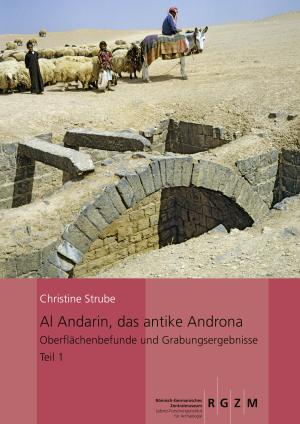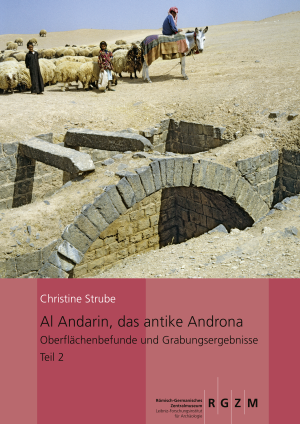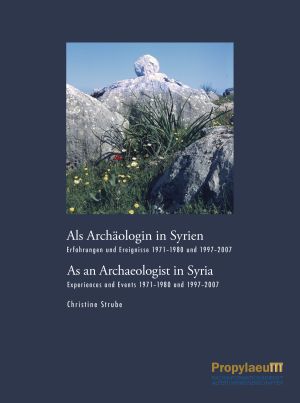Strube, Christine
Al Andarin, das antike Androna: Oberflächenbefunde und Grabungsergebnisse: die Umfassungsmauer und das Kastron, Teil 1
Al Andarin, das antike Androna, überdeckt mit seinen zwei Umfassungsmauern, zehn Kirchen, einem öffentlichen Bad und einem großen Militärbau (Kastron) ein Areal von 155 ha und ist damit einer der größten Ruinenorte der wasserarmen Steppengebiete Zentralsyriens. Als erste von ca. 300 Siedlungen dieser Gebiete wurde Androna 1997-2007 durch Grabungen und Surveys erforscht.
Die vorliegenden Ergebnisse zu den Oberflächenbefunden, zum Kastron (559 n. Chr.) und zu den Mauerringen machen nicht nur die Geschichte Andronas im 5.-7. Jahrhundert n. Chr. greifbar, sie zeichnen darüber hinaus ein überaus lebendiges Bild von der Beziehung zwischen Land und Stadt in spätantik-frühbyzantinischer Zeit.
s. Band 2
Al Andarin, das antike Androna: Oberflächenbefunde und Grabungsergebnisse: die Umfassungsmauer und das Kastron, Teil 2
Al Andarin, das antike Androna, überdeckt mit seinen zwei Umfassungsmauern, zehn Kirchen, einem öffentlichen Bad und einem großen Militärbau (Kastron) ein Areal von 155 ha und ist damit einer der größten Ruinenorte der wasserarmen Steppengebiete Zentralsyriens. Als erste von ca. 300 Siedlungen dieser Gebiete wurde Androna 1997-2007 durch Grabungen und Surveys erforscht.
Die vorliegenden Ergebnisse zu den Oberflächenbefunden, zum Kastron (559 n. Chr.) und zu den Mauerringen machen nicht nur die Geschichte Andronas im 5.-7. Jahrhundert n. Chr. greifbar, sie zeichnen darüber hinaus ein überaus lebendiges Bild von der Beziehung zwischen Land und Stadt in spätantik-frühbyzantinischer Zeit.
s. Band 1
Als Archäologin in Syrien / As an Archaeologist in Syria: Erfahrungen und Ereignisse. 1971–1980 und 1997–2007 / Experiences and Events. 1971–1980 and 1997–2007
Die ungewöhnlich gut erhaltenen Sakral- und Profanbauten der antiken Siedlungen im Nordsyrischen Kalksteinmassiv wurden 2011 in die Weltkulturerbe-Liste der UNESCO aufgenommen. Diese Aufnahme konnte die Zerstörungen in zahlreichen Orten nach 2011 nicht verhindern. Es bleibt die Hoffnung, dass die reiche Kulturlandschaft durch die Aufnahme des noch Erhaltenen und seine intensive Verbindung mit älteren Dokumentationen auch in Zukunft vermittelt werden kann.









